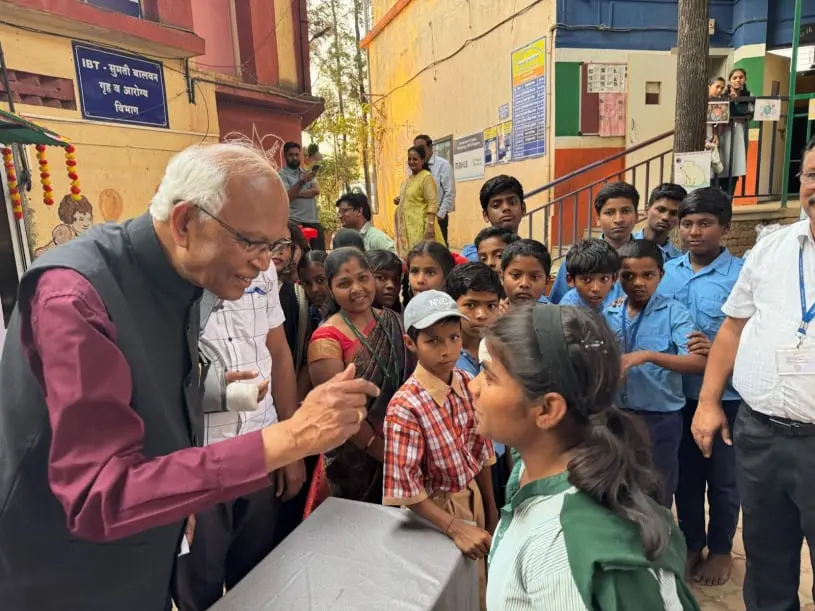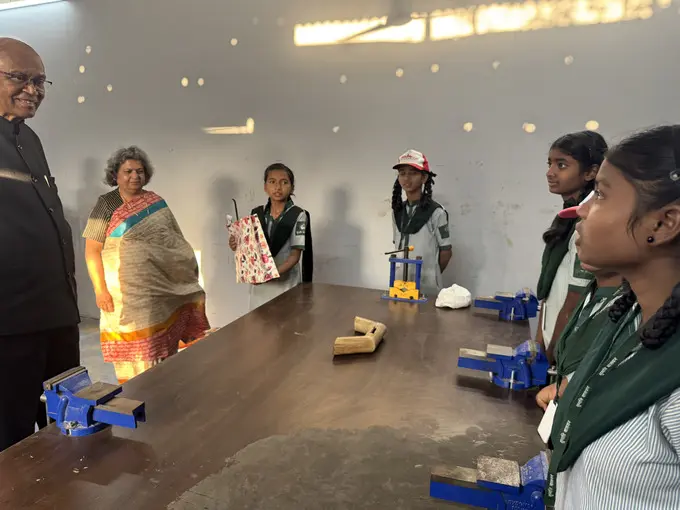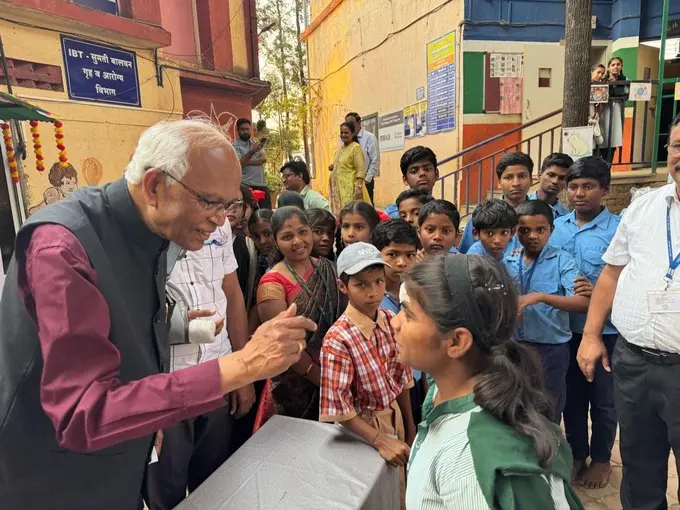How Dr. Mashelkar Redefined Education on SWF 100th event.
Dr. Raghunath Mashelkar pointed to a half-full glass of water on the table and asked the 400 students of Sumati Balwan School to think of different ways to remove the water. At first, the students hesitated, unsure whether their answers would be right or wrong. But Dr. Mashelkar reassured them, appreciating every idea and showing that all answers had value. Encouraged by his response, the students gained confidence and began suggesting creative solutions—some even surprising him.
Before starting the exercise, he emphasized, “There is no single answer to a question, and failing a student for this is wrong.” He amazed the crowd by revealing that there are 42 ways to remove the water and encouraged students to brainstorm even more ideas, asking them to email him their suggestions the next day. One student came up with 64 ways! Next to the podium, Smile Wellness Foundation (SWF) displayed a poster featuring Marie Curie, , with the phrase “Be Curious.” It was the way in which he asked the question that got students curious about science. Their answers unknowingly highlighted scientific phenomena like centrifugal force (“shake the glass and the water will fall out”) evaporation (“leave the glass in the sun and let it do the magic”) and many more. Dr. Mashelkar said, “Let students enjoy the beautiful process of science, not just memorize its outcomes.” This exercise perfectly embodied that idea.
A similar effect was observed when Poorvi, a 9th-grade student, walked out of a three-hour test with 400 questions—happy and surprised at her newfound abilities in math, a subject she had never felt confident in before. This transformation was due to how psychologists from Jnana Prabodhini, an NGO, had framed the questions. Dr. Mashelkar had initially asked, “How will you take out the water?” Yet one student responded with, “How will the sun take out the water?” Though it did not directly answer his question, he still encouraged the response, recognizing its value. Sumati Balwan and SWF follow a core philosophy: “Ten answers labeled ‘incorrect’ by the mainstream can lead to one that changes the world. But if a child is shut down after just two, how can greatness be born? ”When a substance is heated up, its particles move more and it takes up a larger volume – this is known as thermal expansion. The mercury level inside a thermometer, for example, rises and falls as the mercury’s volume changes with the ambient temperature. This effect is most dramatic in gases but occurs in liquids and solids such as iron too. For this reason, large structures such as bridges are built with expansion joints which allow them some leeway to expand and contract without causing any damage.









